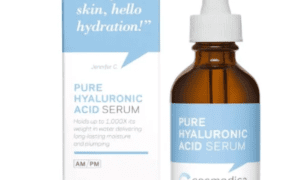In recent years, more homeowners have been seeking eco-friendly solutions for their living spaces, and painting is no exception. Choosing environmentally conscious paint options not only benefits the planet but also contributes to healthier indoor air quality and overall well-being. Traditional paints often contain harmful chemicals that can negatively impact both human health and the environment, making it essential to explore sustainable alternatives.
Whether you’re considering residential painting for your home or planning a small commercial painting project, opting for eco-friendly solutions can provide long-term advantages while creating a safer and more sustainable environment.
Understanding Eco-Friendly Paints
Eco-friendly paints are formulated to minimize the release of volatile organic compounds (VOCs), which are harmful gases emitted from conventional paints. These emissions can contribute to indoor air pollution, respiratory issues, and environmental harm. Environmentally conscious paint options contain lower levels of VOCs or eliminate them entirely, providing a healthier alternative for both indoor and outdoor applications.
When selecting eco-friendly paints, homeowners should look for labels such as:
- Low-VOC or Zero-VOC – These paints release fewer pollutants, improving indoor air quality.
- Natural or Plant-Based – Formulated with natural ingredients like clay, chalk, and plant oils.
- Recycled Paints – Made from unused paint that has been reprocessed and reformulated for reuse.
With a wide range of eco-friendly options available, homeowners can achieve beautiful results without compromising their health or the environment.
Benefits of Choosing Eco-Friendly Paints
Switching to sustainable painting options offers numerous benefits beyond environmental impact. From improving health to reducing long-term costs, here are some compelling reasons to opt for eco-friendly painting solutions.
1. Improved Indoor Air Quality
Traditional paints contain toxic chemicals that can linger in the air for weeks after application. Eco-friendly paints help reduce indoor air pollution by emitting little to no harmful gases, creating a healthier living environment. This is especially beneficial for households with children, elderly residents, or individuals with allergies or respiratory conditions.
2. Reduced Environmental Footprint
By choosing sustainable painting materials, homeowners contribute to a lower carbon footprint. Eco-friendly paints are often manufactured using biodegradable ingredients and sustainable production practices that minimize environmental harm. Additionally, they produce less hazardous waste, making disposal safer and more eco-conscious.
3. Odor-Free Application
One of the biggest drawbacks of traditional paints is the strong odor caused by chemical fumes. Low-VOC and zero-VOC paints produce little to no odor, making the painting process more comfortable and reducing the need for extensive ventilation. This allows homeowners to occupy their spaces sooner without exposure to unpleasant fumes.
4. Durable and High-Quality Finish
Many eco-friendly paint options are formulated to provide long-lasting results that rival traditional products. They offer excellent coverage, resistance to fading, and easy maintenance, ensuring your home remains beautiful for years to come. Whether you are updating interiors or exteriors, sustainable paints provide a durable finish without harmful side effects.
Eco-Friendly Painting Tips for Homeowners
Achieving a sustainable painting project involves more than just choosing the right paint. The entire process, from preparation to application, can be optimized to reduce waste and environmental impact. Here are some practical tips to make your next residential painting project eco-friendly:
1. Plan Your Paint Usage
Overestimating paint quantities often leads to unnecessary waste. Carefully measure the areas to be painted and consult with professionals to determine the right amount needed. If any leftover paint remains, consider donating it to local organizations or using it for touch-ups in the future.
2. Choose Sustainable Tools
Using environmentally friendly painting tools can further enhance the sustainability of your project. Look for brushes and rollers made from recycled materials, and opt for reusable drop cloths instead of disposable plastic sheets. Washing and reusing tools can also help minimize waste.
3. Dispose of Paint Responsibly
Proper disposal of paint and related materials is crucial for environmental safety. Never pour leftover paint down the drain or into the soil, as it can contaminate water sources and harm ecosystems. Many communities have designated drop-off locations for hazardous materials, ensuring proper disposal.
4. Work with Eco-Conscious Professionals
Hiring professional house painters in Dublin who prioritize sustainable practices can make the entire process easier and more effective. Companies like Green Diamond Painting offer environmentally friendly solutions for both residential and small commercial painting projects, using sustainable products and techniques to minimize environmental impact.
Eco-Friendly Paint Finishes and Their Applications
Selecting the right paint finish is important for achieving the desired look and durability in different areas of the home. Eco-friendly paints come in a variety of finishes, each suitable for specific surfaces and purposes:
- Matte Finish: Ideal for living rooms and bedrooms, offering a soft, non-reflective appearance.
- Eggshell Finish: Provides a subtle sheen and is perfect for areas with light to moderate traffic.
- Satin Finish: Durable and easy to clean, making it suitable for kitchens, bathrooms, and hallways.
- Semi-Gloss and Glossy Finish: Best for high-traffic areas and surfaces that require frequent cleaning, such as trim and cabinets.
Understanding these finishes helps homeowners choose the best option for their specific needs while ensuring the use of eco-friendly products.
The Cost of Eco-Friendly Painting
A common misconception is that sustainable painting solutions are significantly more expensive than traditional options. While eco-friendly paints can sometimes have a higher upfront cost, they often provide better long-term value due to their durability and health benefits. Reduced maintenance, fewer touch-ups, and lower energy consumption (thanks to improved air quality) can result in cost savings over time.
For those on a budget, there are affordable eco-friendly paint options available that provide excellent performance without compromising sustainability. Comparing brands and seeking expert recommendations can help find the best balance between cost and environmental impact.
Future Trends in Sustainable Painting
As more homeowners become environmentally conscious, the demand for sustainable painting options continues to rise. Paint manufacturers are responding by developing advanced formulas that offer enhanced durability, faster drying times, and a wider range of colors without harmful chemicals.
Some emerging trends in the industry include:
- Smart Paints: Formulated to improve energy efficiency by reflecting heat and reducing cooling costs.
- Antibacterial Paints: Eco-friendly coatings designed to resist bacteria and mold growth.
- Biodegradable Paints: Products that break down naturally without harming the environment.
Keeping up with these trends allows homeowners to make informed choices that align with their sustainability goals.
Conclusion
Eco-friendly painting solutions offer a healthier and more sustainable way to enhance your home’s aesthetics. From improving indoor air quality to reducing environmental impact, the benefits of choosing low-VOC and natural paints are undeniable. By incorporating eco-conscious practices and working with professionals like Green Diamond Painting, homeowners can achieve beautiful, long-lasting results while making a positive impact on the environment.
Whether you’re planning a residential painting project or a small commercial painting update, opting for eco-friendly solutions is a step towards a greener, healthier future.
Read More From Techbullion



































